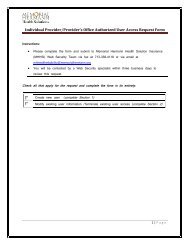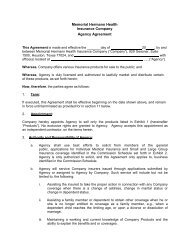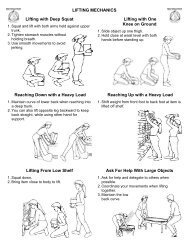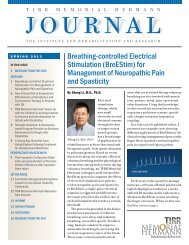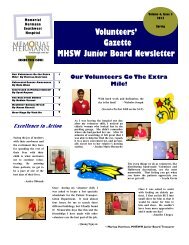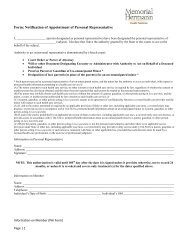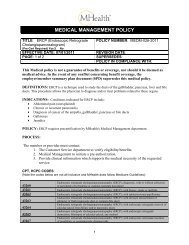I Have a What? A Guide for Coping with Moderate-to-Severe TBI
I Have a What? A Guide for Coping with Moderate-to-Severe TBI
I Have a What? A Guide for Coping with Moderate-to-Severe TBI
- No tags were found...
Create successful ePaper yourself
Turn your PDF publications into a flip-book with our unique Google optimized e-Paper software.
I <strong>Have</strong> a <strong>What</strong>?!:A <strong>Guide</strong> <strong>for</strong> <strong>Coping</strong> <strong>with</strong> <strong>Moderate</strong>-<strong>to</strong>-<strong>Severe</strong> <strong>TBI</strong>Changing how you think about things doesn’t mean you shouldjust “think positive.” Sometimes, it is perfectly appropriate <strong>to</strong> feelsad or angry or anxious or upset. However, sometimes we canmake ourselves feel badly by telling ourselves things that are notactually true. Nearly everyone has times where they cause themselves<strong>to</strong> have a negative mood by thinking something that isn’tactually true.Steps <strong>to</strong> help you change the way you think:1. One of the first steps <strong>to</strong> changing our thinking is <strong>to</strong> notice what we are thinkingwhen we have a negative emotion. You can do this by writing down what you arethinking <strong>to</strong> yourself on a piece of paper. Write down what the situation is, what youare thinking or saying <strong>to</strong> yourself, and how you feel. You can call this your “ThoughtJournal.” [See the example below.]Date Situation Thought Feeling02/20/2008At my doc<strong>to</strong>r’s office.She was 30 minuteslate <strong>for</strong> my appointment.She doesn’t careabout me. She juststacks her scheduleso she can make moremoney.Angry,Resentful02/21/2008Working late at theoffice.I’m never going <strong>to</strong> getthis done. People willthink I’m a failure.Anxious,upset2. Another step <strong>to</strong> helping you change the way you think (and how you feel) is <strong>to</strong> learn<strong>to</strong> recognize ways that you “twist” your thinking. These “twisted” ways of thinking(called thought dis<strong>to</strong>rtions) are all pretty common. The following table describessome of the many ways in which our thinking can become dis<strong>to</strong>rted.Page 70



